Special for the Armenian Weekly
The springs are flowing, but there is no one left to drink from them in Bilecik…
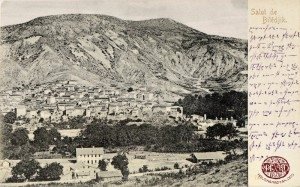 My soul listens to the death of sunset.
My soul listens to the death of sunset.
Your torture kneels down in a faraway land.
My soul takes in the wounds of the sunset and the soil…
And feels how tears come down as rain…
All the stars of shattered lives
Are so akin to failing eyes.
The fountains of my heart tonight
Wait without hope as stars dim away…
The poem “Dzarav” (Thirst) by Atom Yarjanian, also known as Siamanto—one of the Armenian intellectuals exiled to Ayash and then massacred in 1915—brings together these lines that best summarize our journey between Sakarya and Bilecik. During the journey by train towards Bilecik, we keep running into village fountains adorned with Armenian letters engraved into stones. We ask someone:
— Where is the Priest’s Fountain here?
— In Golpazari.
Golpazari, known to us as Bilecik, was a place where many Armenians once lived. The center is 30 miles to the south. Out of all the villages, Goldagi is the one that is most striking in terms of social life and population. In 1911, there were even trumpet bands here. The roads leading to Golpazari resemble the country roads of the Black Sea region. While meandering from one village to the other, before reaching the Bilecik center, we encounter the “Lovers” Fountain right after the “Difficult Times” Fountain. When we reach the village of Goldagi, I’m able to count 32 homes.
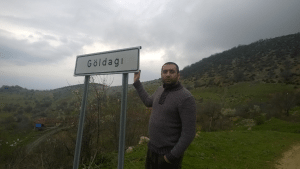
The dogs of the village aren’t happy to see me. They constantly bark and howl. In fact, one chases me away from a side street. Just then, I run into a hunter from Umraniye, Istanbul. This is what I call running away from the chaos of the city. He decided to move from Istanbul to Goldagi: “There are only four people living here, the other houses are empty,” he tells me.
From 32 families in the past to only 4 people today.
AKP Supporters Love Writing on Fountains

The Istanbul hunter shows us the Priest’s Fountain at the exit of Goldagi. This fountain and the others before it (like the one located at the Armas Monastery printing house) have an abundance of political slogans scribbled on them. This one had AKP slogans written all over it with paint. As I approach, I can read the stone of the fountain better: “Rahmetle [with God’s mercy] – March 1862” is the only legible one on the stone on the right-hand side of the fountain. The remaining words are covered in plaster. The other side is a memorial gravestone. “May Mardiros’s daughter Anna rest in peace” can be read. I’m guessing from words here and there that this was inscribed in honor of a girl who died at a young age.
We pray for the souls of the dead and drink from this Priest’s Fountain before we continue on our way. Once upon a time, this fountain quenched the thirst of hundreds of people. Sadly, now it serves only four.
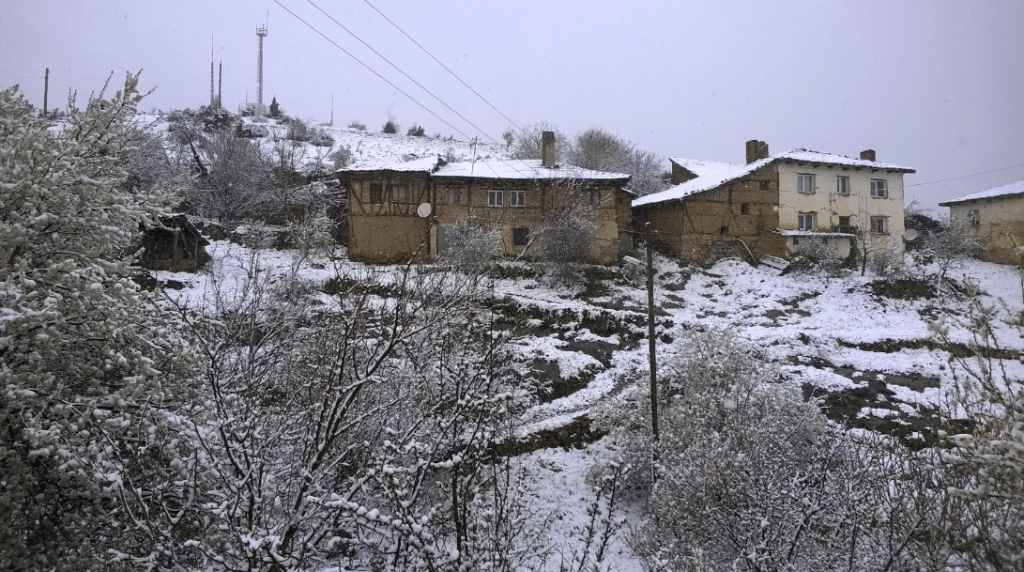
Abbaslik – Papazlik
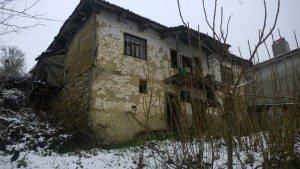
We are in the city center of Blecik. We were caught in hail on our way here, not typical of the season. Apparently, hail fell in Bilecik as well, temperature falling to zero. Everything is covered in snow. The villages I want to get to, namely Abbaslık, Selöz, and Küplü, are about 6 kilometers away from the center.
I look at the Index Anatolicus, the name atlas by Sevan Nişanyan, which tells me that Abbaslık Village was formerly “Papazlık” (Priesthood). It is now my first destination. As you walk around, you feel a strange sense of familiarity. You start to see which houses belong to whom or what.
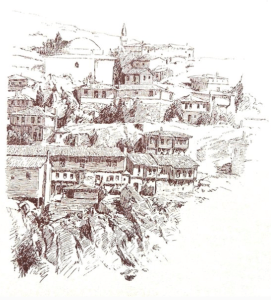
Is it the smell? Or the stones? I don’t know. Perhaps you’ll call it nationalism but this is a sweet type of nationalism. The architectural style of most houses here give me the impression that they are Armenian houses. They are unlike the new houses rising around the mosque built in 1939. Houses covered in mud-brick, with beams on the exterior and stones in the bottom. A man I meet on the street says that there are only six families left and most of the mud-brick houses are left by the Armenians. Most of the other houses are empty… It looks like a ghost village.
We run into an official in the village square who is here to check water meters. “Ask the former village mukhtar. He is a madman, he should know.” He shows us the house of the mukhtar. We knock on the door. Someone walks down the stairs and opens the door. Here is our dialogue:
— Where was the Armenian church?
— Over there where the mound of dirt is. It’s buried under that mound, he smiles as he shows the man-made hill down the village.
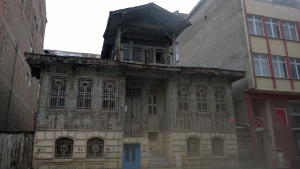
— What happened to the stones?
— I’m a mad man. Don’t ask me. I had a heart attack. I don’t want to meddle with this business.
— Why?
— They come and ask all the time.
— But what happened to these stones? Were they used to build new houses?
— A huge machine came. We threw the stones into it. The pulverized stones were then used in construction…
There are stone workshops all the way along Abbaslık to the center. Cut stones underneath white snow… Marble stones… I want to deny the fate of these stones and want to believe that the former mukhtar is indeed mad…
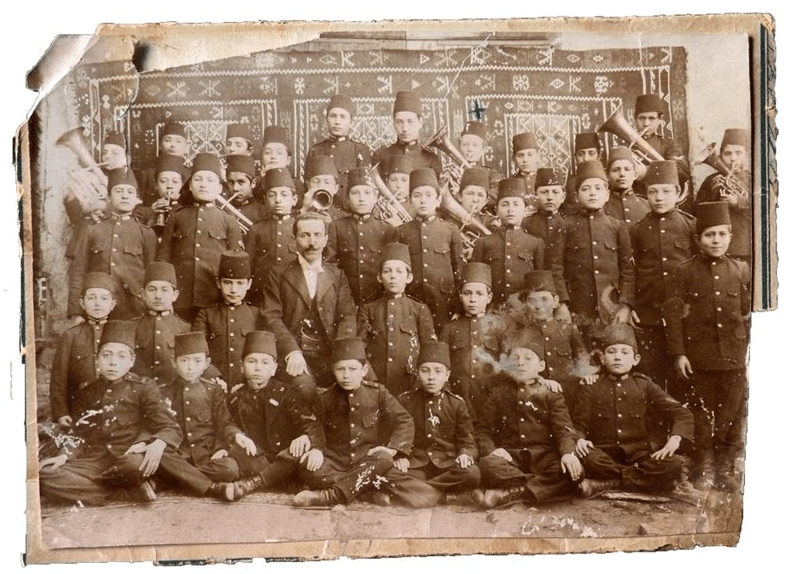
Aug. 18, 1915

We pass by Bilecik train station on our way back from Abbaslık. The station will be redundant after the construction of the fast high-speed train is complete. There is a huge courtyard in the middle of the old lodging that once accommodated the railroad workers. Our resources tell us that Armenians from various villages of Bilecik gathered here before setting out for Eskişehir. The priest calls everyone for a final service on Aug. 18, 1915. Word is sent out to schools in Bilecik. The doors and windows of houses left by the Armenians will be removed. Armenian children hold service inside with their mothers while other children wait outside to remove doors and windows… Turkish records mention 13,600 Armenians deported to Eskişehir in a single day.
In Bilecik today, there are no traces left of those 13 churches whose doors and windows were dismantled.
A Strange Mukhtar in Küplü!
The nearest village to the center of Bilecik is Küplü, a formerly Greek village. We want to stop by on our way. Mehmet, the mukhtar of the village, is the former principal of the primary school there. He works hard to protect many buildings in the village, including historical houses.

Formerly, a Greek church rose in the site of the village school now. What remains of the church today are a few gravestones in the back and front walls of the school. “I worked a lot for the renovation. Look at these.” He shows us the applications he made to the council of monuments, the municipality, and the office of the governor. He received no response from any of these offices. He keeps the seal of the church as well. The seal dates 1898. “People come here every year from Greece, have the seal affixed and keep it as a memento.” Lately he is working on the old mansion which a member of his family jointly inherited. Right next to the mansion is a stone with a cross engraving, a remnant of the church, and a fountain next to it. The stones with a Greek inscription have replaced the broken wooden steps of the mansion… “I will have these removed. It’s a shame.”
We started off with fountains… We were thirsty…
Let’s conclude our journey in Bilecik with the final lines of Siamanto’s poem, as we set off to Eskişehir…
And all the ghosts of the dead tonight
Wait for the dawn with my eyes and soul
To quench the thirst of their lives
Hoping for a droplet of light from the sky.
Author’s acknowledgment: This journey was supported by Open Society Foundation, Istanbul.


Thank you, Aris, for this beautiful, melancholy piece.
Sad stories of our past.
Dear Aris Nalci,
I cannot thank you enough for this report from Bilecik. I have been looking for info on this village for years. Maybe I was spelling it incorrectly & I did not know the name, Golpazari. My Grandmother, Naomi Balabanian was born & raised there & was deported from there in 1915 to walk the Syrian desert at age 16. She met an older woman on the march & when they arrived in Aleppo in one piece, that woman’s son, Asador Shamagasian, found her. He had made his way from Turkey to Alexandria to the U.S. after witnessing the killing of his father & brothers when he was 8 in 1895. His mother told him she was a bringing a girl with her & he was to marry her. They were married 50 years & had 2 sons & a daughter, my Mother. Grandpop taught me to read/write Armenian, but I’ve lost it over the years. I took Grandmom back to Armenia in 1985 during the Blessing of the Muron, but of course, we couldn’t go to Western Armenia where she grew up. God Bless you for this information & esp the drawings & pictures of a village I’ve only imagined my whole life.
My mother in law Heranoush Semerdjian Gumuchian whom came from Adapazar East of Istanbul & her husband Loutfig Gumushgedyan, now changed to Gumuchian came from a Village south of Adapazar called Geyvay Orta Kar outside of Birejik whom both were survivors of the Genocide. It was nice to see a story on the Bilicik although the spelling I have is Birejik. Is this the same village or is Bilicik another village in Asia Minor?
Birecik is a village in Turkey just north of the Syrian border: https://www.google.com/maps/place/Birecik,+%C5%9Eanl%C4%B1urfa,+Turkey/@36.9735286,37.9526474,14z/data=!4m2!3m1!1s0x153181df8eb75b25:0xf33e785ebbae0f5d
This is where my paternal Grandmother Anna Terjanian, née Guerguerian, was killed.
Bilecik is in Western Anatolia, close to the Bosphorus.
Thank you Aris for another warm, heart wrenching story. Vartzkt gadar.
Dear Stephen T. Dulgarian, my grandmother is from “Geyve” too from Adapazar… Now I am translating a book from Armenian about the villages from there, writen in 1919 published in 1960 in Beirout… Hopefully let me send the armenian version of it to you…
And thanks Luanne Kip for your warm wishes…
Thanks for the correction on my In-Laws Village I thought was Birejik, but the Village name is Bilecik. I also have my In-Laws book in Armenian on Adapazar which is a big thick book. Thanks everyone on your answers. Stephan
my grandparents come from Kuplu, thank you so much!!